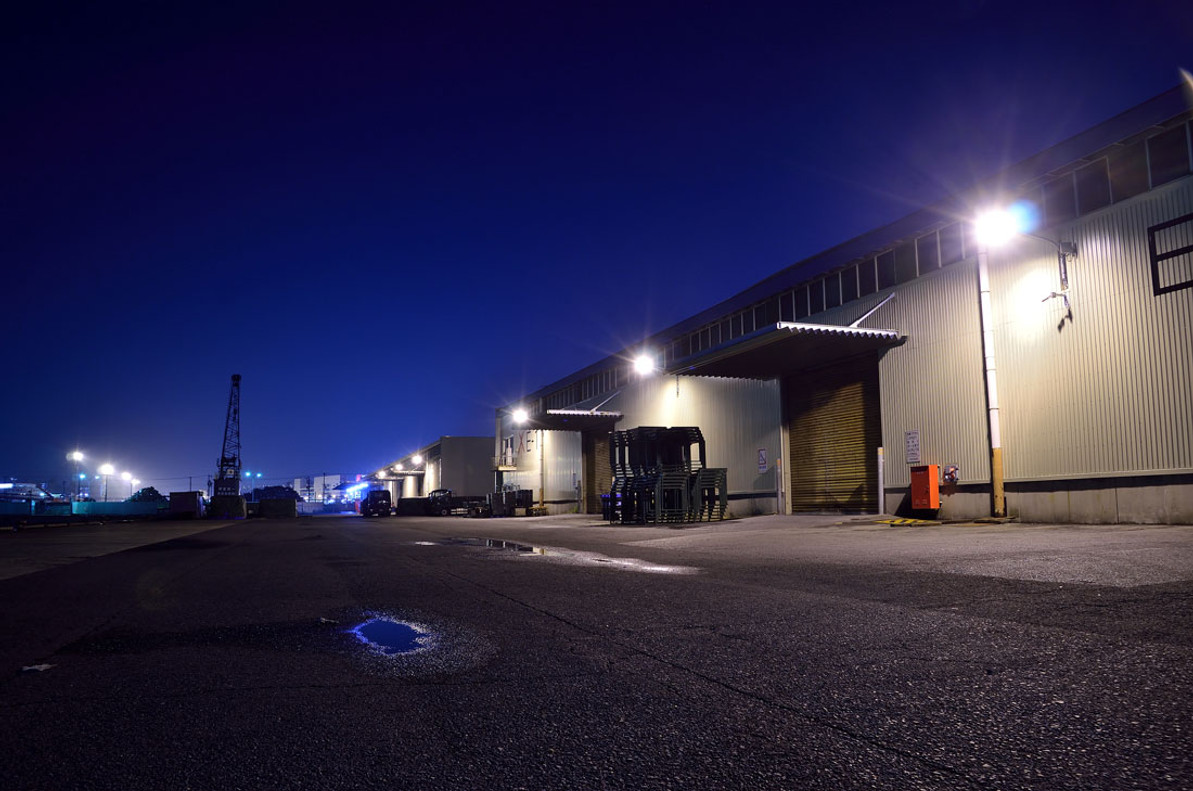Securing Industrial Buildings with Advanced Security Lighting Techniques
Industrial security lighting is paramount for the safety and security of buildings, assets, and people. However, ensuring your security lighting plan is well-designed, fit for purpose and properly maintained is essential.
With advanced security lighting techniques, this article will guide you to secure your industrial buildings effectively. We explain the need for security lighting in industrial settings and explore the different lighting options available. We then provide tips to help you create an effective security lighting plan designed to meet the needs of your business with buying tips and advice on avoiding common mistakes.
The Need for Effective Security Lighting Solutions in Industrial Buildings
Effective security lighting is essential in industrial buildings. It is crucial to safeguard these spaces, deterring unwanted intruders and enhancing overall safety. The importance of industrial security lighting can be summarised through the following benefits it offers:
- Crime Prevention: Adequate lighting discourages criminal activities, reducing the risk of vandalism and theft.
- Enhanced Safety: Well-lit areas minimise accidents, promoting the well-being of employees and visitors.
- Surveillance Support: Security cameras work more effectively in well-lit conditions, improving surveillance capabilities.
- Quick Response: Timely detection of incidents allows for rapid security response, minimising potential damage.
- Liability Reduction: Proper lighting can help prevent slip-and-fall accidents, reducing liability concerns.
- Asset Protection: Valuable assets and equipment are less vulnerable to theft in well-illuminated areas.
- Energy Efficiency: Modern lighting technologies provide security while conserving energy and reducing operational costs.
- Customisation: Tailored lighting solutions can match the unique security needs of various industrial businesses.
Investing in effective security lighting is prudent and often a legal requirement in industrial buildings, where security and safety are paramount. It’s an essential component of comprehensive security measures, ensuring peace of mind and protecting property and people.
Types of Industrial Security Lighting
There are several different types of security lights to consider for industrial premises. These are:
Floodlights
Floodlights are high-intensity lights designed for widespread illumination in large areas and exterior spaces. This outdoor floodlight is an excellent option for outdoor security lighting.

Motion-Activated Lights
Motion-activated lights are fixtures that automatically switch on when they detect movement in their vicinity. These lights conserve energy and provide illumination when needed for access while deterring intruders and alerting of unauthorised activity.
Emergency Lighting
Emergency lighting is a safety lighting system designed to illuminate exit routes and key areas during power outages or emergencies. It ensures visibility and aids safe evacuation in critical situations. When it comes to industrial and factory security lighting, emergency lights are essential.
Moveable or Portable Lighting
Moveable or portable lights are versatile light sources that can be easily repositioned as needed. They are a flexible and adaptable lighting solution in dynamic work environments, providing a light source when and where needed. This USB rechargeable magnetic portable light is a great value example.
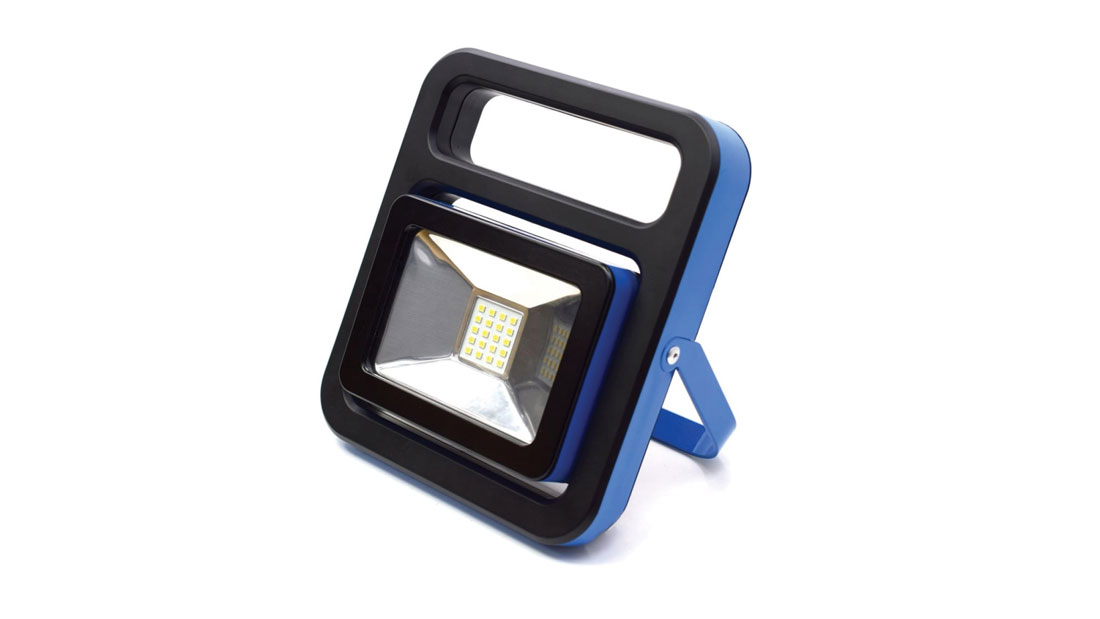
Stand-by Lighting
Stand-by lighting provides backup illumination in the event of power outages. This ensures continuity in critical operations and enhances safety during emergencies. Regarding industrial and warehouse lighting, stand-by lights are essential for business continuity.
Continuous Lighting
Continuous lighting provides consistent and even illumination to maintain visibility, enhance safety, and support various operations throughout the night. This adjustable street light is a contemporary, energy-efficient example.
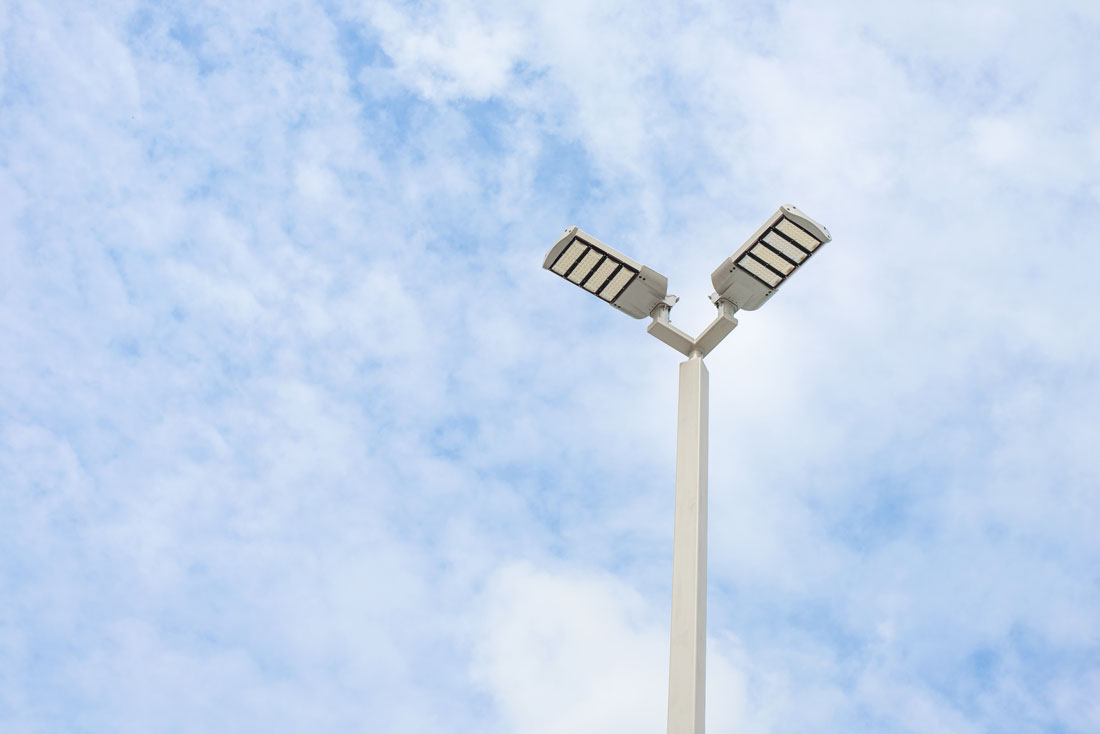
Factors to consider when choosing lighting
Different industrial security lights are on the market, and choosing the right ones for your premises is crucial for optimal security. Consider the following factors to inform your choices:
Location and Positioning
Selecting the correct lighting position in industrial security is crucial. It must be tailored to the building’s location for optimal effectiveness. Properly positioned lights help deter intruders, minimise blind spots, and enhance surveillance camera performance.
In rural areas, lighting may need to cover vast spaces, while urban environments benefit from more focused lighting to avoid light pollution. This location-specific approach ensures that the lighting solution complements the surroundings, maximises security, and minimises energy waste, thus providing a balanced and effective security system.
Light intensity and coverage
When selecting industrial security lights, it’s essential to consider both light intensity and coverage. The right balance between these factors ensures effective security. Optimal light intensity, typically measured in lumens, offers clear visibility and deters potential threats.
Adequate coverage, on the other hand, guarantees that all key areas are well-lit, leaving no room for blind spots. Aim for even light distribution to achieve this balance, and consider motion-activated lights for energy efficiency. Regular maintenance to keep bulbs clean and bright is crucial. Well-planned intensity and coverage enhance security and save on energy costs, making your industrial space safer and more efficient.
Energy Efficiency
Selecting energy-efficient industrial security lighting is vital for sustainability and cost savings. Energy-efficient lights, such as LED fixtures, consume less power and last longer, reducing maintenance expenses. They contribute to a greener footprint by lowering carbon emissions and energy consumption. Moreover, improved energy efficiency results in decreased utility bills, enhancing the long-term financial viability of your industrial lighting system.
By investing in energy-efficient lighting, you’ll reduce operational costs, minimise environmental impact, and ensure your security measures are both practical and responsible, aligning with modern demands for sustainable industrial practices.
Maintenance requirements
When considering industrial security lighting options, maintenance requirements are essential, as the upkeep of your lighting costs time and money. Selecting lighting solutions that require minimal upkeep saves you time and money and ensures your security system operates efficiently. Choose fixtures with extended lifespans and durability, reducing the need for frequent replacements or repairs.
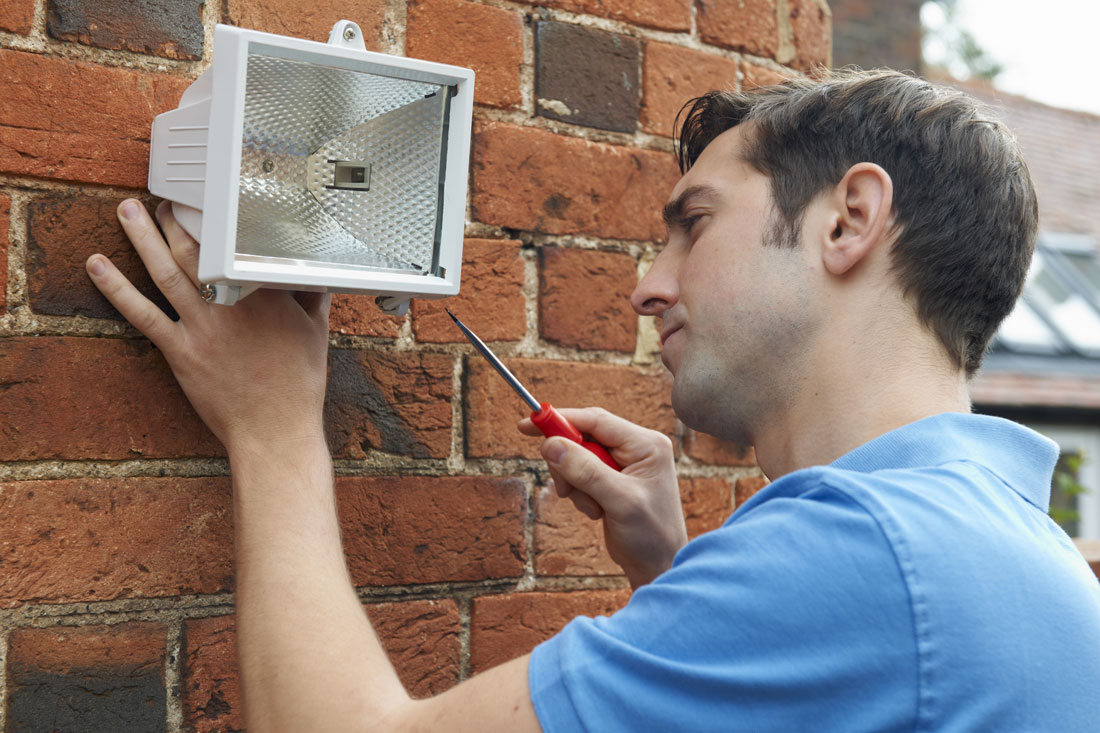
This decision enhances the reliability of your security lighting while minimising disruptions and upkeep costs. In the long run, investing in low-maintenance lighting proves cost-effective and allows you to focus on other critical aspects of your operations. Make maintenance an afterthought by choosing lighting solutions that excel in longevity and reliability.
How to Assess Your Industrial Security Lighting Needs
Conducting a security audit
Conducting a thorough security assessment is paramount when evaluating industrial security lighting needs. Start by identifying vulnerable areas within your industrial premises, such as blind spots, entry points, or car parks.
Analyse potential security threats and assess the level of illumination needed to deter intruders effectively. Determine whether you require continuous lighting, motion-activated lights, or a combination of both. Factor in the layout of your facility and any unique challenges it presents. A comprehensive security assessment ensures you install the proper lighting in the right places, significantly enhancing the safety and security of your industrial site. By addressing these aspects, you create a robust defense against potential threats.
Legal considerations and regulations
When assessing your security lighting needs, factor in legal considerations and regulations. Ensure compliance with local codes and outdoor lighting regulations to avoid potential legal issues and fines. Obtain the necessary permits and permissions as required by your area. This ensures that your lighting installations meet safety and environmental standards while respecting neighbouring properties and minimising light pollution.
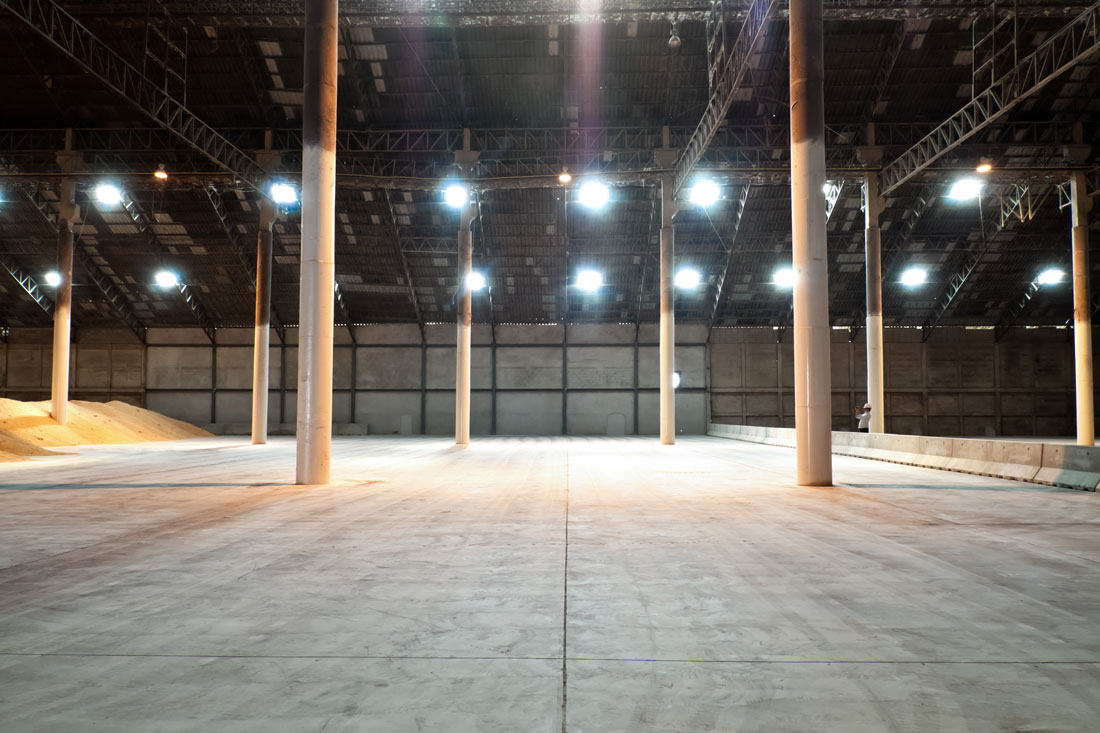
In the UK, artificial light can be considered a ‘statutory nuisance’ and ‘light pollution’ when it is overly bright or poorly directed onto neighbouring properties, affecting a neighbour’s right to enjoy their property. This is commonly caused by security lights shining into people’s homes and could incur a penalty of up to £20,000. To avoid this, carefully consider the placement and brightness of your lights in relation to the natural area and neighbouring properties.
Adhering to legal requirements keeps your industrial site in good standing with authorities. It contributes to responsible and community-friendly operations, fostering a positive relationship with those in the surrounding area.
Designing an Effective Security Lighting Plan
A well-thought-out lighting scheme deters potential intruders and enhances overall safety. Here are some valuable tips for creating an efficient industrial security lighting plan:
- Assessment of vulnerable areas
Begin by identifying the most vulnerable areas of your site. Entrances, loading docks, and secluded corners are common targets for intruders. Focus your lighting on these zones.
- Determine lighting requirements
Evaluate the specific lighting requirements for each area. High-risk locations may need brighter lighting, while others require lower intensity. Consider varying the light levels as needed.
- Balanced light intensity and coverage
Strive for a balance between light intensity and coverage. Overly intense lighting can create glare, while inadequate coverage leaves dark spots for intruders to exploit. Use lighting fixtures that can be adjusted to meet your needs.
- Energy efficiency
Choose energy-efficient lighting solutions to minimise operational costs. LED fixtures, motion sensors, and timers can help ensure lighting is only active when necessary, saving energy and money.
- Regular maintenance
Plan for regular maintenance to keep your lighting system in optimal condition. Burnt-out bulbs or malfunctioning fixtures can compromise your security. Regular inspections and timely repairs are essential, but you can reduce the frequency and cost by opting for low-maintenance lights.
- Legal compliance
Read up on the legal considerations and regulations governing industrial security lighting in your region. Ensure your plan complies with local codes, permits, and permissions.
- Consider light pollution
Aim to minimise light pollution to avoid disturbing nearby residents and ecosystems. Properly directed lighting, shields, and timers can help achieve this balance.
By following these tips and customising your industrial security lighting plan to your specific needs, you can create a robust system that enhances security and promotes energy efficiency, sustainability, and responsible lighting practices.
Professional Installation vs. DIY
Consider the pros and cons of choosing between professional installation and a DIY approach:
Professional Installation
Opting for professional installation ensures that the system is set up correctly. Expert installers can strategically position lights for maximum coverage, minimise pollution, and align fixtures with your security needs. This guarantees an efficient and effective lighting solution. However, the downside is that it may involve higher initial costs.
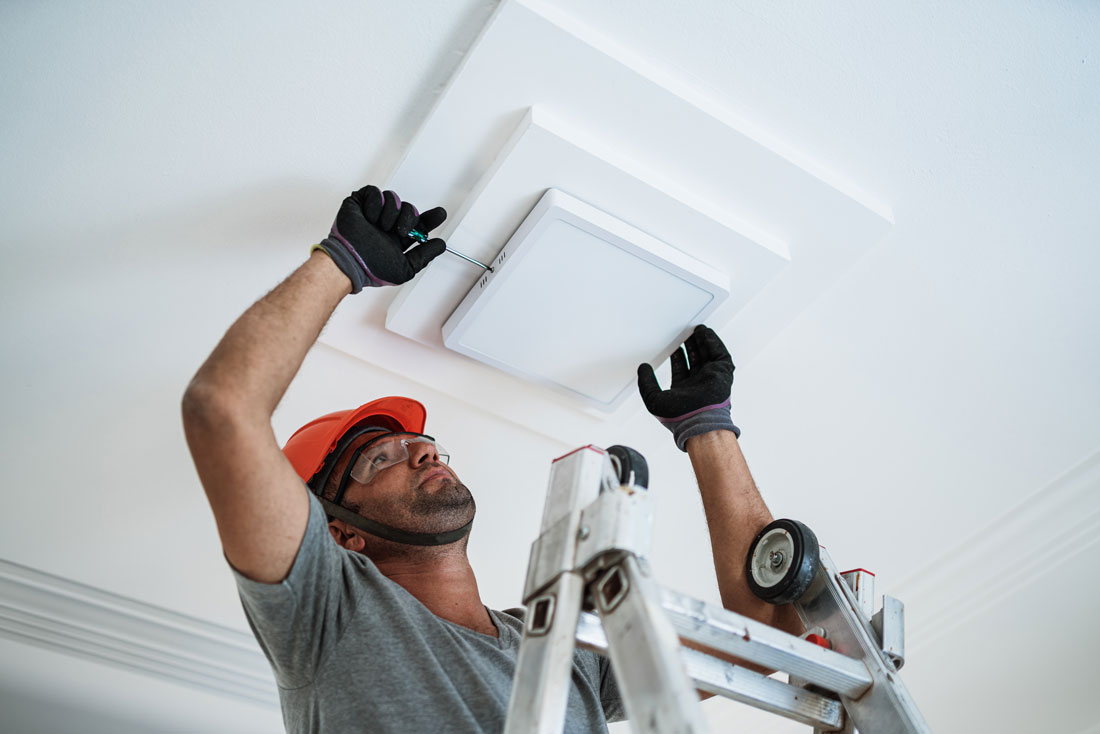
DIY Installation
A DIY approach can be more cost-effective but requires careful planning. While it offers flexibility, there’s a risk of misalignment, underutilisation, compromised safety, or excessive energy consumption if not executed properly. Maintaining high security and energy efficiency levels in industrial areas is more challenging with DIY installations.
In either case, regular maintenance is crucial to ensure the system functions optimally. Choose the option that best suits your budget, technical expertise, and long-term security and energy efficiency goals. If you lack the proper knowledge and skills, you must hire a professional for safety and compliance reasons.
Common mistakes to avoid
There are several common mistakes made with industrial security lighting. Consider the following information and tips so you can avoid these:
A. Overly bright or inadequate lighting
To achieve optimal lighting, assess your area and determine the appropriate wattage, lumens, and coverage. Use energy-efficient bulbs with adjustable brightness. Ensure fixtures are correctly positioned, avoid excessive glare, and utilise shielding to prevent light pollution. Regular maintenance is essential to replace burnt-out bulbs promptly and keep lighting levels consistent.
B. Neglecting maintenance and inspections
Regularly schedule maintenance and inspections to ensure your lighting remains effective. Check for burned-out bulbs, damaged fixtures, and corroded wiring. Keep records to track maintenance needs and replace components promptly. Neglecting maintenance can compromise security and energy efficiency, so stay proactive in upkeep.
C. Ignoring energy-efficient options
When choosing lighting solutions, prioritise energy efficiency. Choose LED or other low-energy technologies to reduce operating costs. Motion sensors and timers help minimise wastage by ensuring lights are only active when needed. Don’t overlook energy-saving options, which contribute to reduced maintenance, sustainability, and cost-effectiveness.
D. Failing to integrate with security systems
Integrating your lighting with security systems is essential. Ensure your lights are synchronised with surveillance cameras and alarms. This way, they respond to potential threats, enhancing safety and deterrence. This connection is necessary to maintain overall security efficiency.
In a Nutshell:
An effective industrial security lighting plan should consider the location of your premises, its layout and any vulnerable areas. The right security lights are crucial for efficacy, longevity, and compliance. Follow the tips in this guide to help you make informed choices and avoid common mistakes.
Ready to illuminate your industrial space for optimal security? Explore Arrow Electrical’s wide range of industrial security lighting solutions. Your safety is our priority.
Recent Posts
-
Dive into Ambience: Transformative Hot Tub Lighting Ideas
Imagine a beautiful summer evening, the stars twinkling above as you sink into your hot tub, envelo …16th May 2024 -
Dine Under the Stars: Outdoor Lighting Ideas for Your Garden
Picture a serene summer evening: you’re dining al fresco in your garden, illuminated by soft, …13th May 2024 -
Illuminate Your Evenings: Stylish Pergola and Gazebo Lighting
As the sun sets and casts a soft glow over the garden, picture a pergola or gazebo bathed in warm, …3rd May 2024

